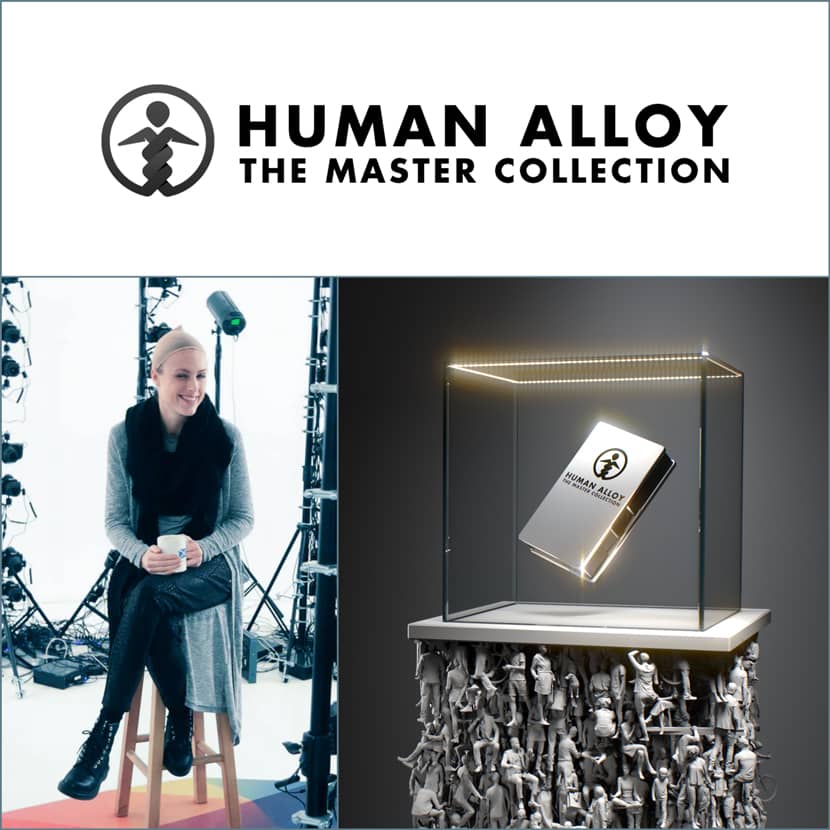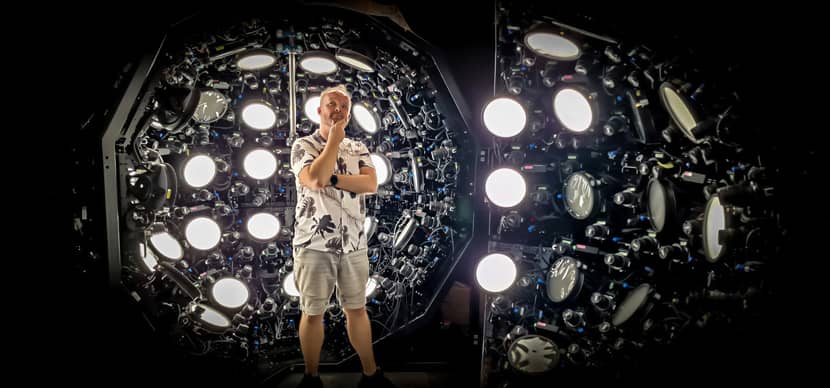
HumanAlloy founder Tristan Bethe returns with a remarkable comeback — The Master Collection. This exclusive release includes more than 4,700 lifelike 3D people, the result of over a decade of scanning, refining, and dedication to realism. In this exclusive interview, Tristan shares the story behind his long-awaited project, his thoughts on AI’s growing role in Archviz, and what it means to finally complete something he started years ago!
Get Your Lifetime Access For HumanAlloy - Master Collection!
Tristan, many people in the Archviz community still remember HumanAlloy for its incredibly realistic 3D people, but the brand went quiet for a while. What brought you back with The Master Collection?
Guilty as charged! When we started our company th3rd back in 2015, my co-founder Rudo Bisschop and I had what we called a “decision walk.” Whenever we had to make a big choice, we’d walk and talk. It always helped.
That day the question was simple: should we focus on client work or invest in HumanAlloy.com? I voted for the collection first, because I knew once we started taking client work, HumanAlloy would get pushed aside.
We managed to secure some crowdfunding and loans to build our first 130-DSLR human scanner. We scanned a lot of people on weekends, but cleaning the scans was the bottleneck. It was just me and one other artist doing all the cleanup. Building a proper 3D asset collection means a huge upfront investment with no guarantee it’ll ever pay off.
Eventually we had to take on projects to stay afloat. That led us deep into the fashion world, scanning 3,000 shoes for Adidas, product lines for Vans, and a ridiculous number of handbags for luxury brands. It was great work, but it left little time for HumanAlloy.

And then Snap Inc. entered the story, right?
Exactly. We were acquired by Snap in 2022. That was a big step, and I decided to shut HumanAlloy.com down for a while. Running it while working full-time at Snap was impossible.
About a year and a half later Snap cancelled the project they had acquired four companies for. We were let go, as they politely put it. Suddenly I had time again and around six thousand unprocessed scans sitting on hard drives.
That’s when I thought: this is unfinished business. We had put so much effort into those sessions, with models, makeup artists, stylists, and a small team making it happen. It would have been a waste to let it die on a disk.
So I began remastering everything. I rebuilt the website, filtered and categorized the scans, and ended up with roughly 4,200 new 3D people. The team at Ikarus3D helped with cleanup, and after months of work everything finally came together. Now, after all these years, I’m ready to release everything we built.
That’s quite a comeback story. What makes The Master Collection special for artists today?
Honestly, this is me finally finishing what I started in 2015. I’ve always felt HumanAlloy models looked more human—warmer, more natural than most. The only limitation was quantity. We never had the time or team to process everything.
So now it’s the full archive: over 4,750 3D people, available once as a lifetime license. €995 for freelancers and €1,995 for studios. If you’d buy those individually at twelve dollars each, that’s more than $52,000, or about twenty-two cents per model.
It’s either a very good idea or a very bad one. I haven’t decided yet. But seriously, it’s meant as a once-in-a-career release and only 100 licenses will be available!
You’ve seen the evolution of 3D people, from early photogrammetry to AI assets. What’s your take on where this is heading?
I’d say I’m somewhere in the middle. I use AI a lot in my current workflow, but I’m not in the “AI will fix everything” camp, and definitely not in the “we’re doomed” one either.
Clients don’t care how you make things. They care that it looks right, feels consistent, and matches feedback. You can’t deliver one render where the people look different from the previous round. Consistency is king.
AI helps, but it still breaks down in predictable ways. Archviz artists need control. “Sorry client, the AI wouldn’t do it” doesn’t work. The sweet spot is AI-enhanced, artist-directed work.
A good example is upscaling. We used to sell two types of products: Premiums and Basics. The Premiums were ultra-detailed and heavy—five days of work per model. The Basics, which are the ones in The Master Collection, are lighter, faster, and practical for production.
With AI upscaling, you can take a Basic model, render it, and then upscale it in post for hyper-realism that beats even our old Premiums. Maximum control and maximum quality. Best of both worlds.
You’ve lived through both the art and tech sides of 3D. After all these years, what still keeps you motivated to create?
That rush, that moment when something works visually or technically. That’s the drug of choice.
I started wanting to make pretty pictures. Then 3D felt like a cheat code for perspective and lighting. Years later I realized I’d mastered the tools but had no time left to make things for myself. That’s when I decided to create something scalable, something that could live beyond my own hours.
Step one: make 3D people. Step two: question marks. Step three: profit.
That journey led me into scanning, building rigs, and somehow being labeled a developer—I can’t code to save my life. Now I’m drawn back to painting again, digital painting of course. I need my undo button. There’s a lesson in there somewhere about going full circle.
Looking at The Master Collection now, what does this release mean to you personally?
Closure comes close. I’ve always started projects that were early for their time but never fully finished them. This time I want to finish something.
Rebuilding HumanAlloy and seeing those models neatly displayed on the new site was incredibly satisfying. It’s finishing the idea I had back in 2008, when a manager asked, “Why aren’t we using 3D people?”
I’m also grateful that I never know how much work something will take before I start. Otherwise, I’d never begin. My advice? Just start. You’ll end up in places you never expected, meeting people you never would’ve met.
And who knows I still have about a thousand A-posed scans waiting. Maybe next time we’ll make them posable or animated.
Final question. What do you hope artists take away from The Master Collection?
I hope artists who join this early access feel they’re investing in their creative future.
HumanAlloy isn’t the biggest 3D people provider, but that’s a strength. Using these models makes your work stand out. You’re not using the same assets everyone else is.
I also want artists to spend less time hunting for suitable 3D people and more time creating. Once all the new models are keyworded and searchable (early 2026), they’ll have a complete catalog built specifically for finding what they need fast.
Marketplaces are terrible for that. You can lose hours trying to find a consistent set of models.
I guess I want artists to have the feeling that they finally 'fixed' the 3D people problem for good. Just as I can finally say I fixed a problem I wanted solved back in 2008...
Thanks, Tristan!
Thank you—and to anyone reading, thanks for caring about realism, independence, and good 3D people!

HumanAlloy is a Dutch 3D asset company founded by Tristan Behe and Rudo Bisschop, known for setting new standards in digital human realism. Since 2009, HumanAlloy has provided artists and studios with meticulously scanned and optimized 3D people that bring authenticity and emotion into visualizations. After a hiatus following the brand’s acquisition by Snap Inc., HumanAlloy has returned with The Master Collection — a definitive archive of over 4,700 3D people, crafted for professionals who value realism, consistency, and artistic freedom.

